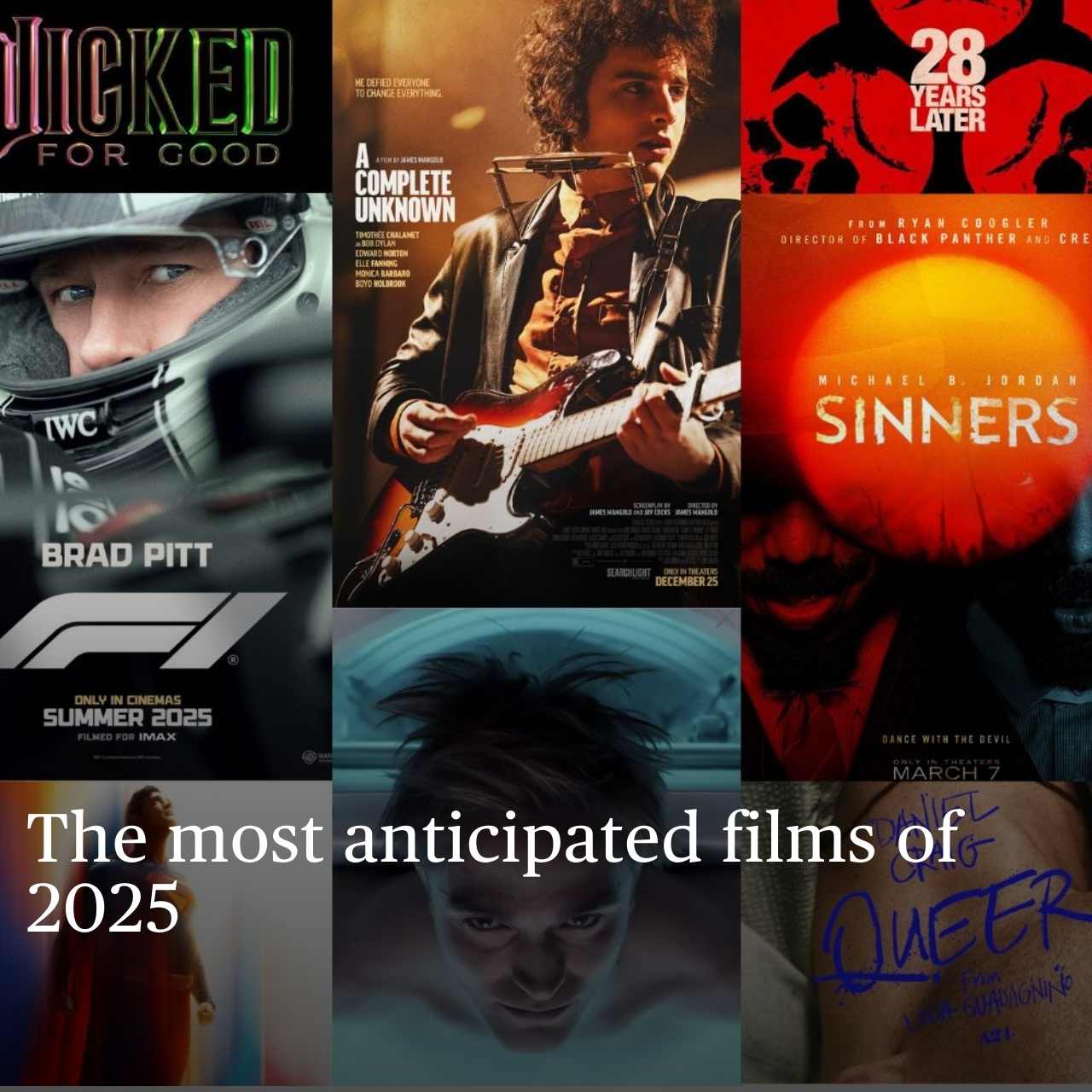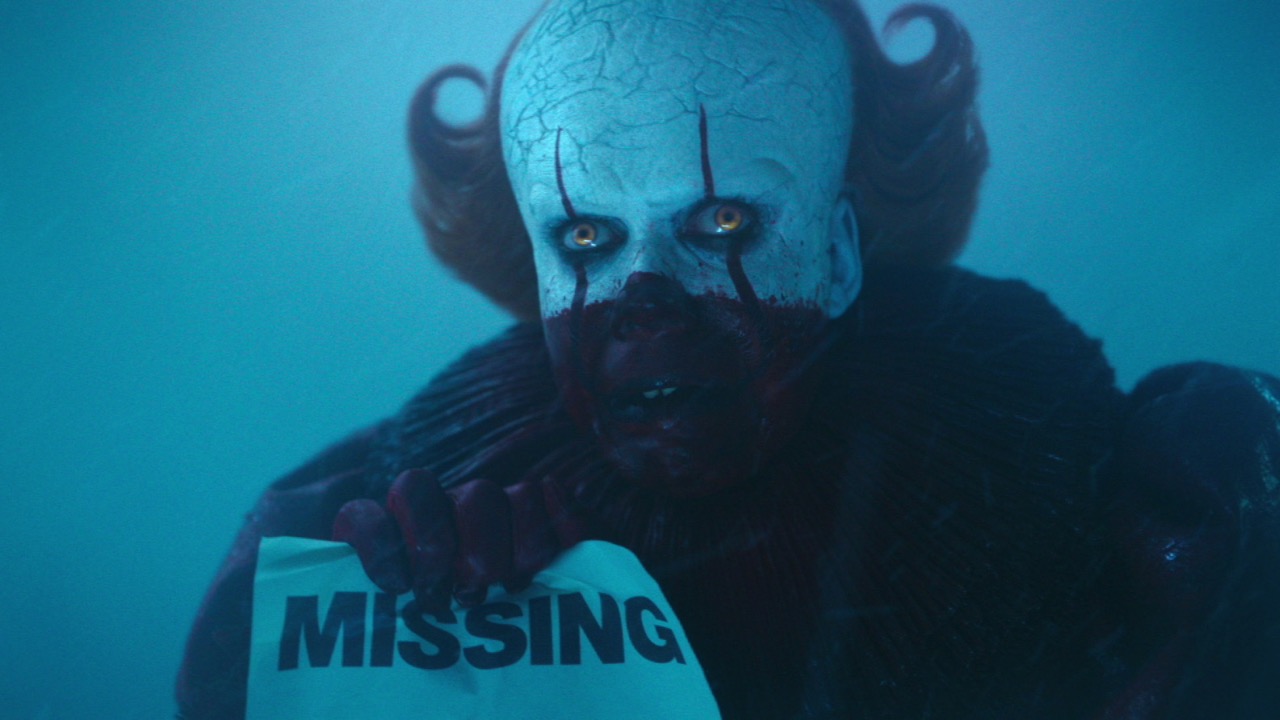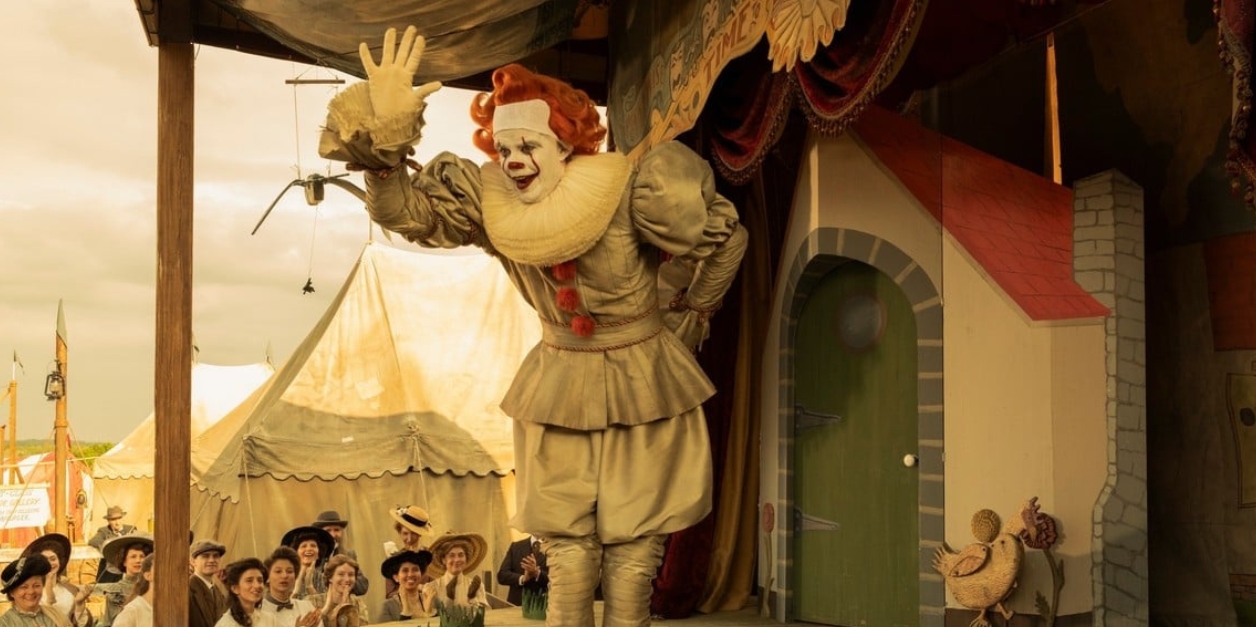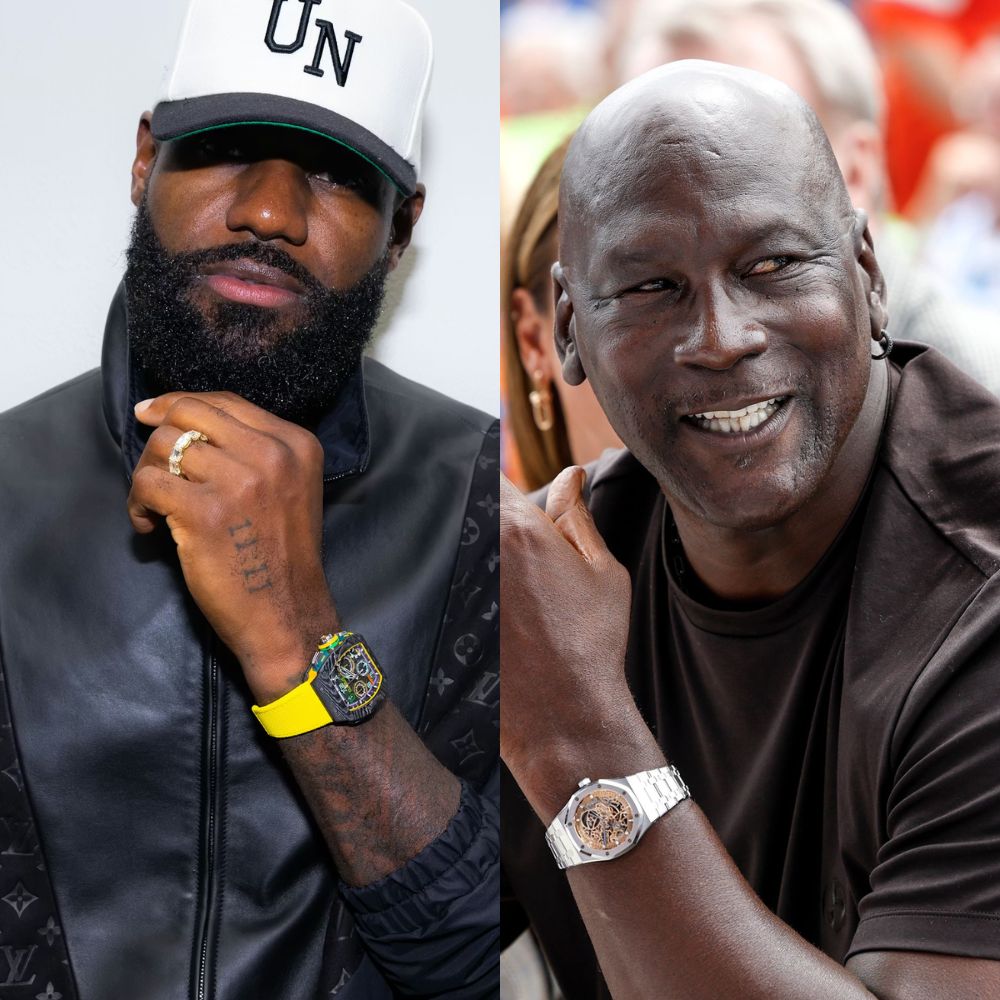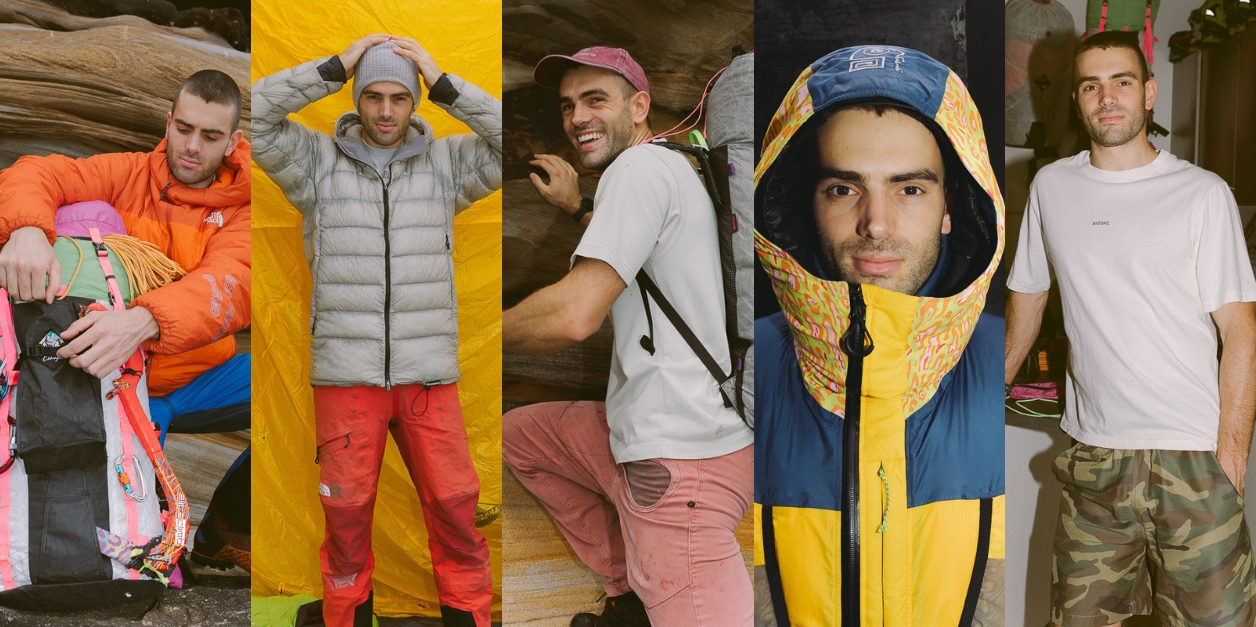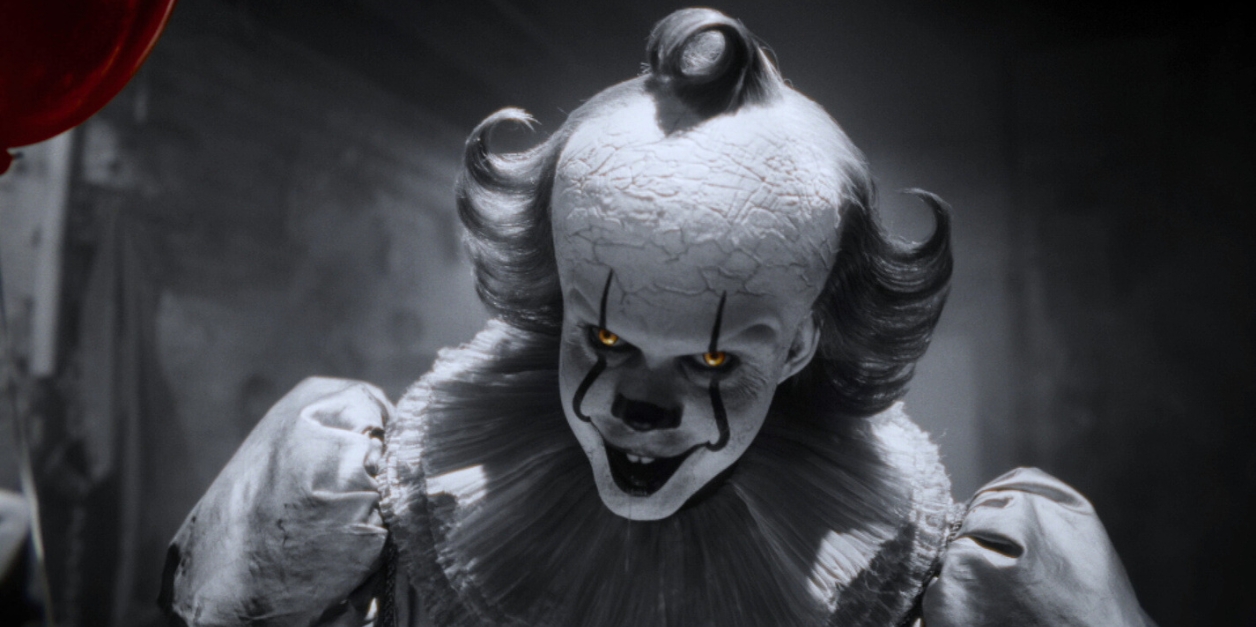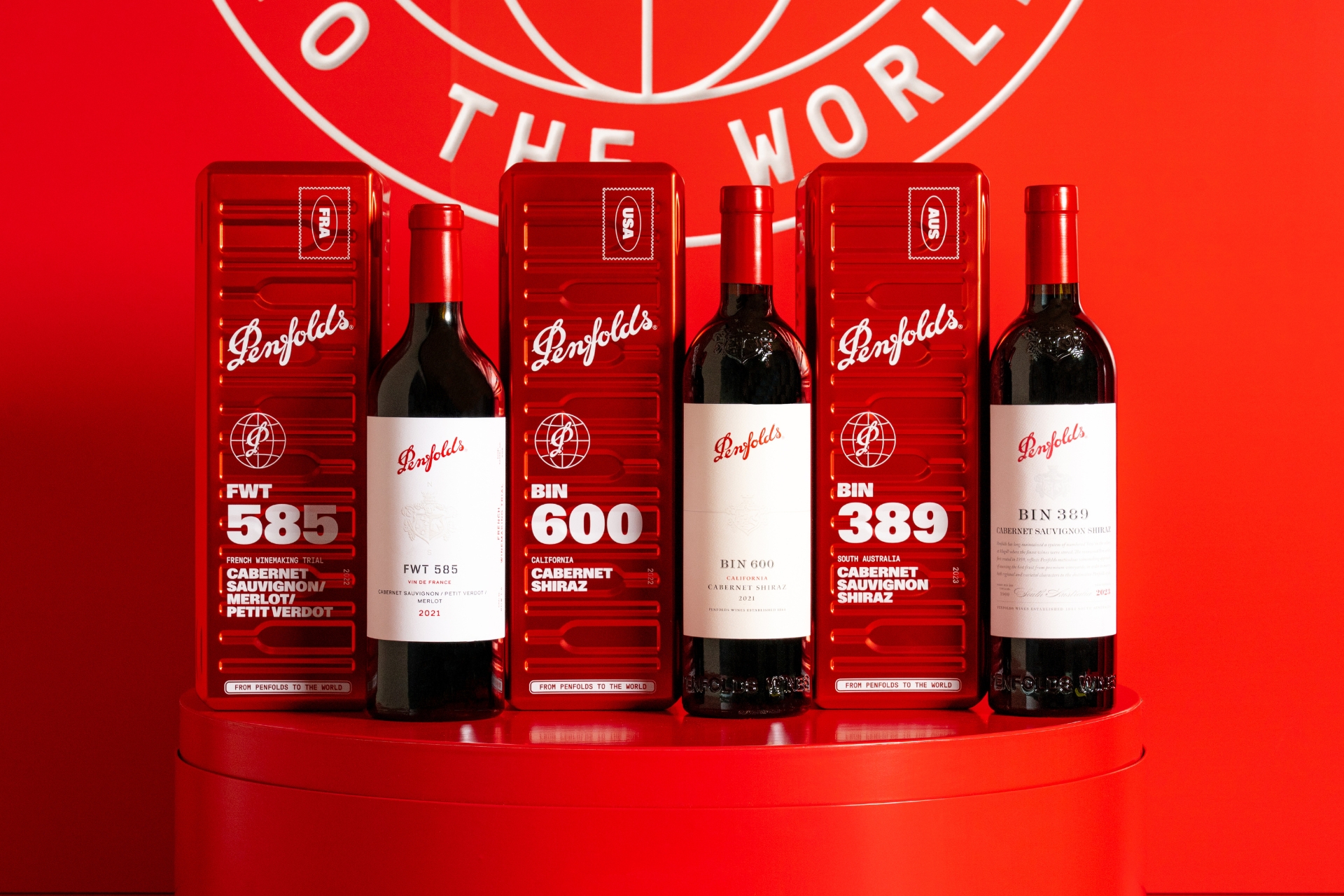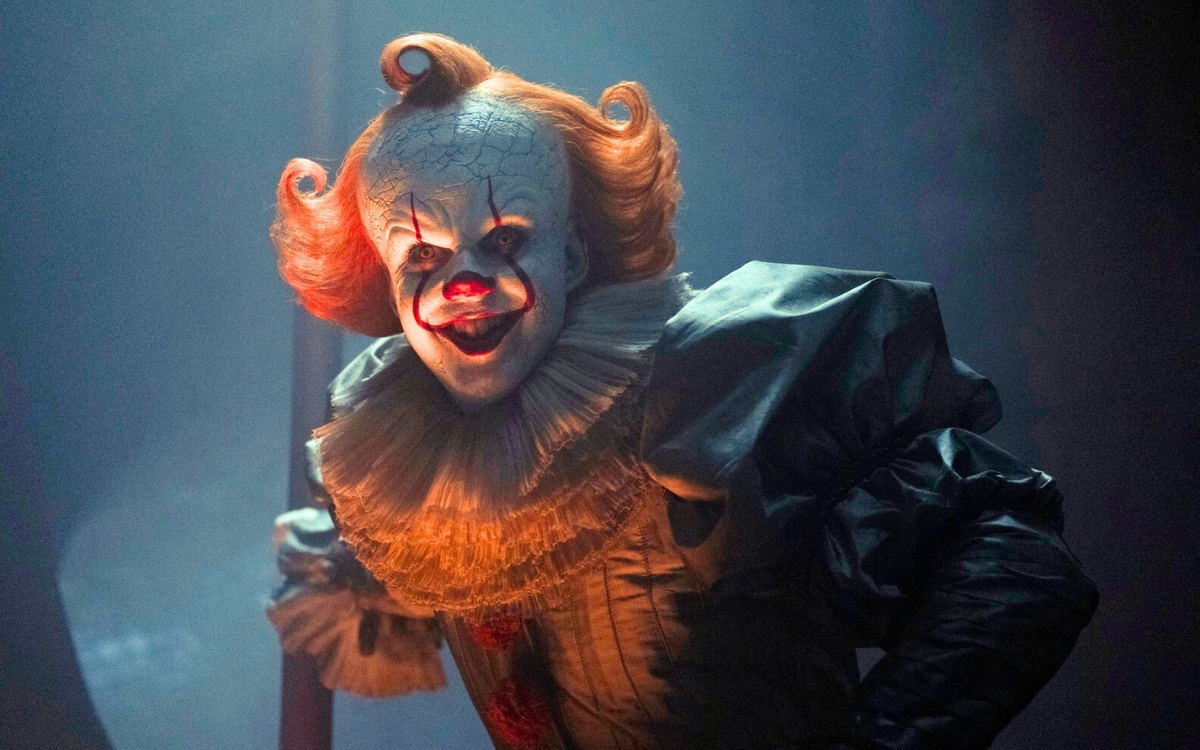How Rolex’s unlikely collab watch with Domino’s Pizza became a cult classic
The inside story of the most unusual (officially sanctioned) Rolex model ever made
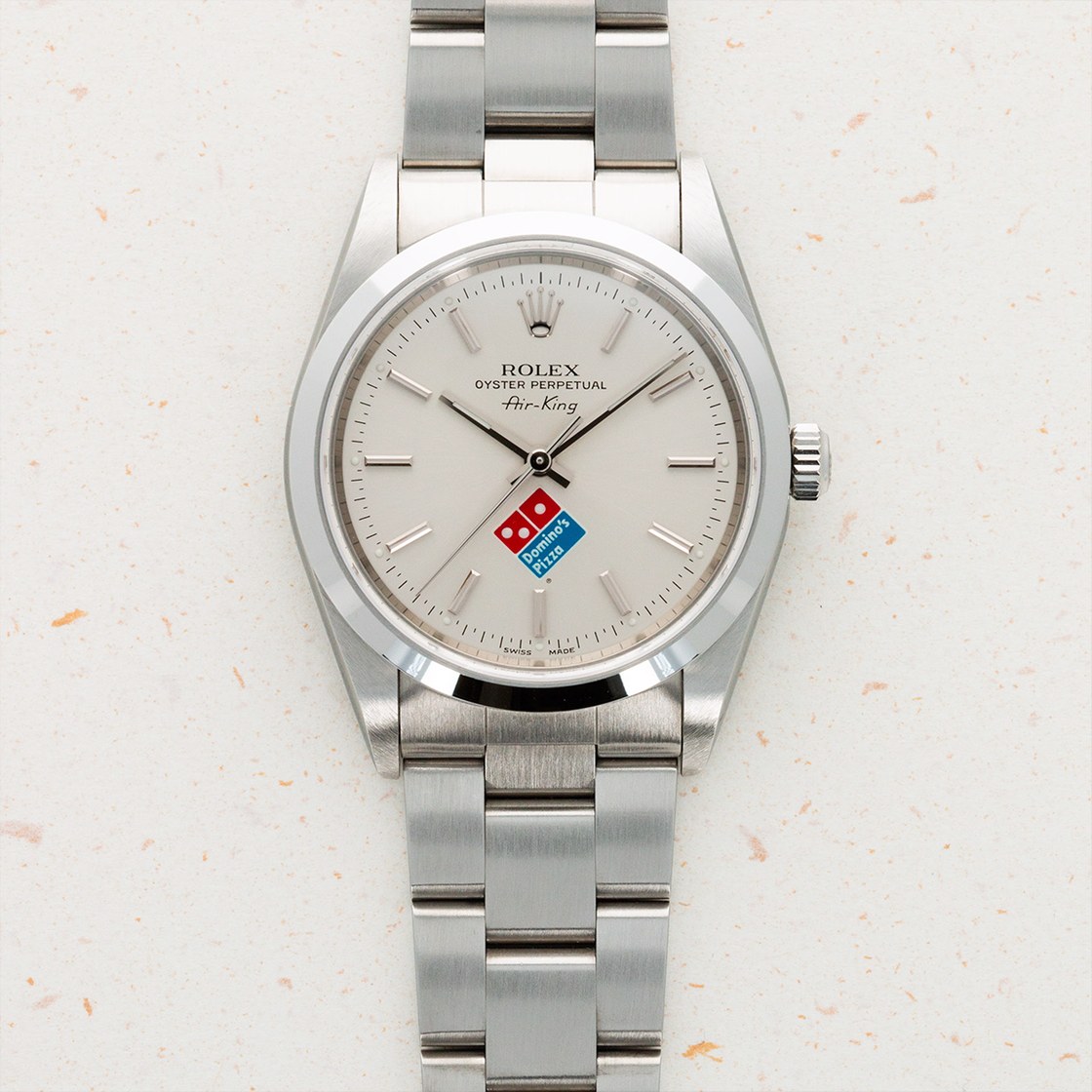
ON 1 APRIL 2023, the British microbrand Studio Underd0g announced a new addition to its quirky line of food-themed wristwear: the Pepperoni pizza watch.
The colourful chronograph – complete with mushroom, olive and cured sausage dial details – was pitched as a sibling to the brand’s existing models, like the Watermel0n, Go0fy Panda and Desert Sky.
All shared the same recipe: bright gradients, playful colourways and a deliberate jab at the “over-serious” world of traditional watchmaking, according to founder Richard Benc.
The Pepperoni, though, took unseriousness to the next level: it wasn’t even real. It was an April Fool’s joke.
But the prank hit harder than expected.
After drawing 20,000 visitors and 800 sign-ups, Studio Underd0g decided to make the fantasy real, putting two versions – the Pepperoni and the Hawaiian – into production.
From there, interest didn’t just heat up, it caught fire.
Boosted by a clever run of “hand-delivery only” pop-up events, Studio Underd0g’s pizza-themed watches were selling so fast sources suggested the two-year-old start-up was outselling Rolex.
Though no one mentioned it at the time, this was oddly appropriate.
As unlikely as it sounds, Rolex had beaten Studio Underd0g to releasing its own pizza-themed watch by more than four decades.
The Rolex Domino’s Pizza Air-King came from a period from another era for the world’s No.1 watch brand – the 1980s – when it started producing watches with custom corporate logos on their dials.
There exist Rolexes out there bearing the emblems of Porsche, Pan Am, BP, Qatar Airways, Emirates, Coca-Cola, Honda, and dozens more.
But none quite captures the satisfying clash of luxury and the everyday – the high-low, silver-meets-saucepan charm – like the Domino’s Air-King, given to franchisees and employees of the American fast-food chain for hitting weekly sales targets.
The watch has gone on to achieve, if not quite mythical, then certainly very keen interest status, with examples selling at Christie’s for more than $20,000 USD – good going for a model that cost $700 USD back in 1980.
“The first collectors to really appreciate these, in the mid-to-late 1990s were Japanese collectors,” says the vintage dealer Eric Ku, of esteemed LA-based auction platform Loupe This, which has sold a number of Domino’s Rollies including one to “a well-known artist” and another as recently as May.
“These collectors really have an eye for kitsch Americana. And this totally fits that description, you know? It’s a really whimsical watch. I don’t like the term ‘rare’, but it’s certainly an uncommon watch that people have grown to love because of the representation of Americana. That bright, colourful Domino’s Air-King logo on the dial. And then having it found on the Air-King, which is the most utilitarian, proletarian, kind-of cheap Rolex.”
“In many ways the Domino’s Air-King isn’t any different from the hundreds of corporate collaborations that Rolex produced over the years,” says Christy Davis, co-founder of Subdial, the London-based online marketplace for pre-owned luxury watches.
“It’s a simple off-the-shelf model with a corporate logo stamped onto the dial without much thought about the watch’s wider design, or how the logo might be incorporated to blend in. However, it has amassed a fame of its own, largely because the partnership of brands is so incongruous. You’d struggle to find a brand less ‘Rolex’, yet there it is emblazoned across the dial in lurid red and blue: Domino’s Pizza. They’ve even maintained the 45-degree rotation of the logo to make it look extra-silly.”
“But therein lies the attraction. It’s a watch that couldn’t possibly be genuine, except it is. It gives a thrill that’s particularly powerful in the modern zeitgeist, where memes and LOLZ rule.”
This year is the 45th anniversary of the first Domino’s Pizza Air-King.
Given that the watch world loves any excuse to mark a birthday, no matter how seemingly spurious, it seemed as good as time as any to dive into a well-aged slice of Rolex lore.
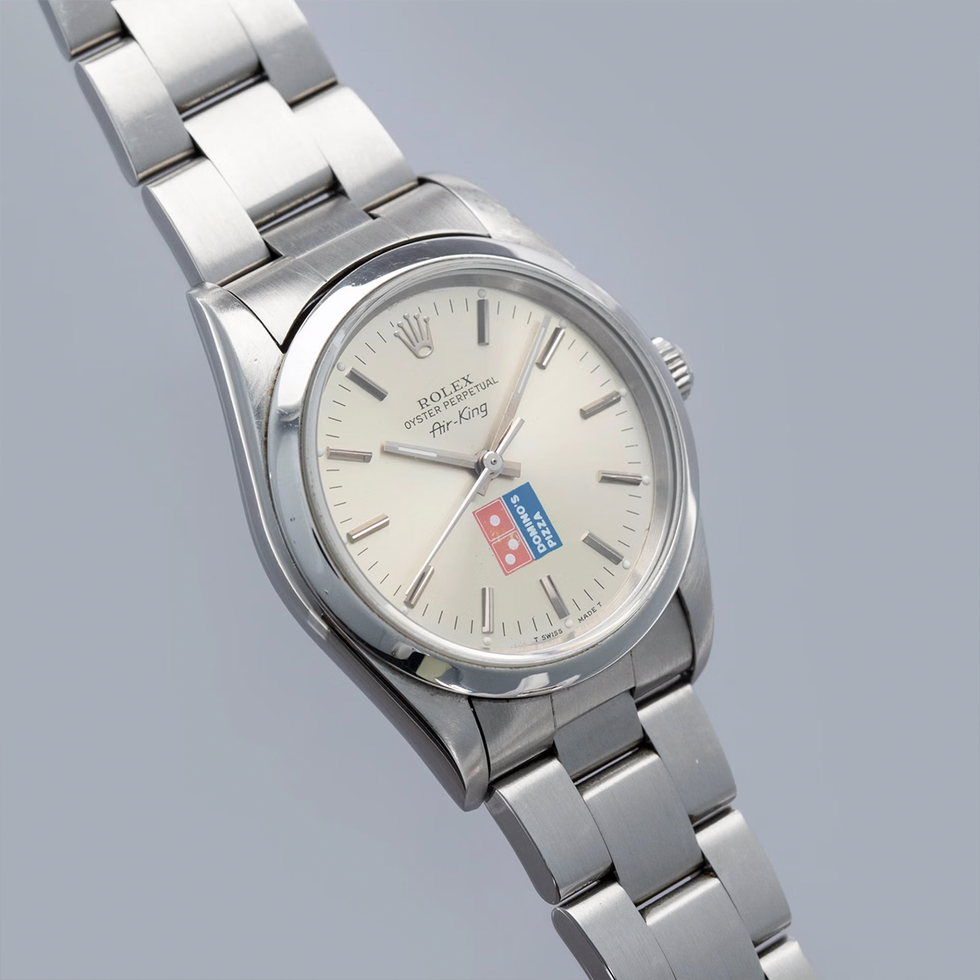
Today, Domino’s Pizza is an $23.5bn AUD business, but its story begins in leaner times.
It dates to 1960 when a former marine and college drop-out named Tom Monaghan, together with his brother Jim, scraped together $900 [about $15,000 AUD today] to buy a struggling Michigan pizza shop called DomiNick’s.
A bit like Studio Underd0g, Domino’s success had as much to do with its delivery system as it did its product.
In 1973 it introduced the promise of “pizza delivered in 30 minutes or less – or it’s free”.
To achieve this then-radical ambition it created a foldable, corrugated cardboard pizza box that was designed to withstand heat, stacking and the rigours of mass delivery.
Tom Monaghan was a larger-than-life character, and not just because of all that pizza. He collected Frank Lloyd Wright architecture, established a Domino’s petting zoo, planned to build a Catholic utopia in Florida and succeeded easily in his ambition to “die broke” by giving away most of his billion-dollar fortune.
But in 1977 he hit upon the idea of issuing watches as incentives to his staff, after a manager admired the Bulova on his wrist which he’d had emblazoned with Domino’s red, blue and white logo.
Monaghan told his staff member he would gift him the watch if he could hit a sales target, something he duly did.
“I wore a Bulova with our Domino’s logo on its face,” he wrote in his 1986 autobiography Pizza Tiger. “A franchisee asked what he had to do to get that watch from me, and I told him ‘Turn in a twenty-thousand-dollar sales week’. He did it.”
The casual deal became a formal challenge, first with Seikos and then, in 1980, the prize became an Air-King.
Eventually, the challenge was refined: hit $25,000 per week for four weeks, then you’d earn your Domino’s-dialled Rolex.
“As soon as I realised the challenges were attainable, I started to work hard for them,” Domino’s franchisee Hannah Lantz told the Wall Street Journal in 2014, recalling the ‘Rolex Challenge’.
“I won five times, including at the $45,000 and $50,000 level. Fifty thousand dollars is a lot of pizza per week. It required growing the staff and more preparation.”
“Rolex would send those pieces direct to the factory and put the emblem of your company on the dial,” says David Silver, owner of Rolex emporium The Vintage Watch Company, in London’s Mayfair.
“In the American retailer manuals of the time, you can see the stores could order directly from those brochures [for corporate gifting]. If you read that stuff it says the minimum quantities that were required. The other region that was doing it the most was the Middle East. Aramco and various Saudi oil companies.”
“The Air-King is your grandfather’s Rolex, in a way,” says Tony Traina, the Chicago-based founder of the Unpolished newsletter, who has previously written about The Crown’s Domino’s tie-in.
“It’s not one of the sporty or flashier ones. I mean, these are Domino’s franchises strewn about the country, right? They’re good small business owners, so even flashing a two-tone Datejust would be too much for them. A steel Air-King just works.”
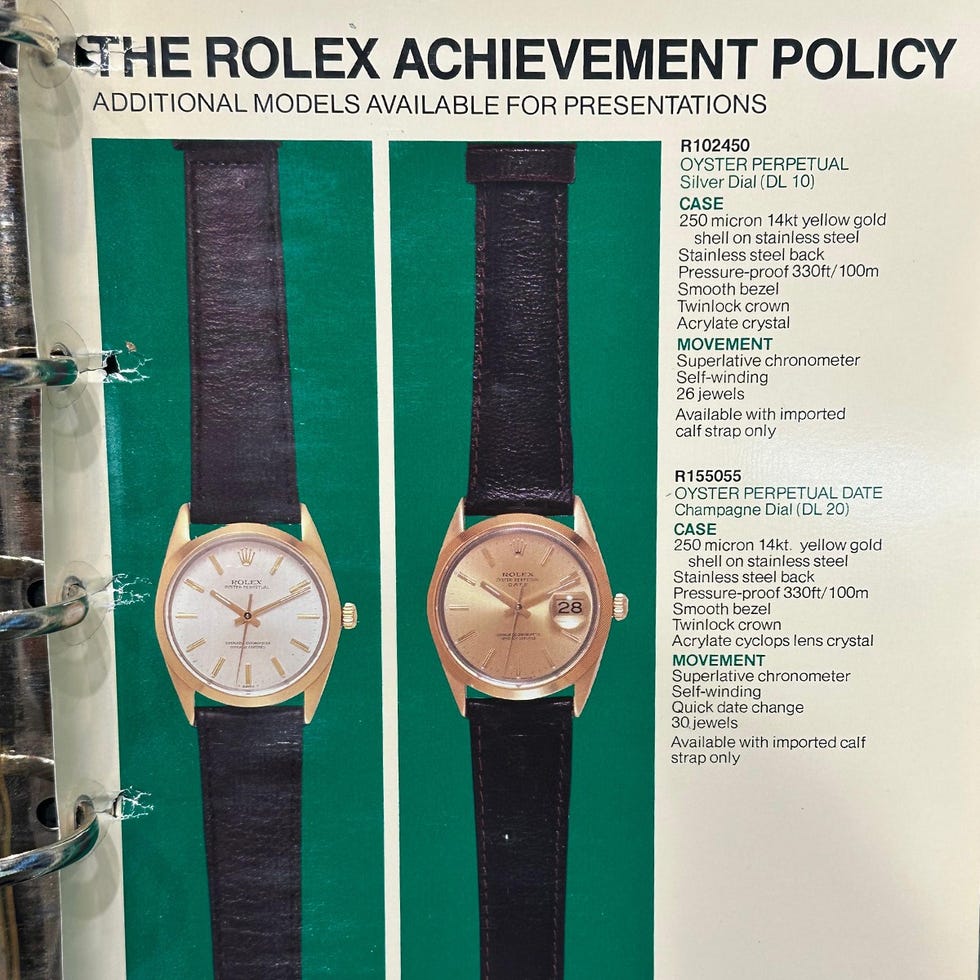
Like any good pizza recipe, the Domino’s Rolex has gone through a few iterations, from extra cheesy to undercooked.
The original slice was the Air-King ref. 5500, proudly sporting a big, unapologetic Domino’s logo smack at six o’clock, like a corporate badge of honour.
Early examples came with engraved case-backs – initials, ‘TSM’ for Tom Stpehen Monaghan, and even warranty papers addressed to ‘Domino’s Pizza’.
Then things got… less satisfying.
As later models were introduced – including the ref. 14000, the ref. 14010 (with engine-turned bezel) and later the ref. 114200, as well as an Oyster Perpetual ref. 12600 – Domino’s began experimenting with its branding.
There was an unappealing monochrome black version (because what’s pizza without colour?), followed by a tiny colourful logo, and a straight-logo variant that lost the suggestion of a pizza box abandoned after the late-night munchies.
Eventually, Rolex phased out the dial branding altogether and stuck a tiny steel Domino’s logo on the first or second bracelet link – a move that pretty much defeated the point.
Meanwhile, because many traditional collectors viewed Domino’s Rolex dials with disdain, vintage dealers would often swap out the dial for a standard-issue version, or polish or remove the ‘TSM’ case-back engraving, obscuring its branded origins.
By the early 2000s the company stopped producing corporate-branded dials completely.
These days any cartoon characters (Mickey Mouse, Snoopy, Homer Simpson), pop culture icons (Pokémon, Batman, SpongeBob SquarePants) or logos (KFC, Supreme, Gucci) on Rolexes that might catch your eye on Instagram are the work of aftermarket customisers, independent modders or boutique watchmakers.
Genius next-level creators like former About Time interviewee The Dial Artist also exist.
All of them are very much not endorsed by Rolex, who today takes a robust stand on third-party customisation.
A lawsuit heard by the Swiss Supreme Court last year against a redacted customiser widely reported to be Artisans de Genéve ruled that the company was not allowed to advertise and sell modified watches, though personalisation on behalf of an owner was legally OK, even if it instantly voided Rolex’s warranty.
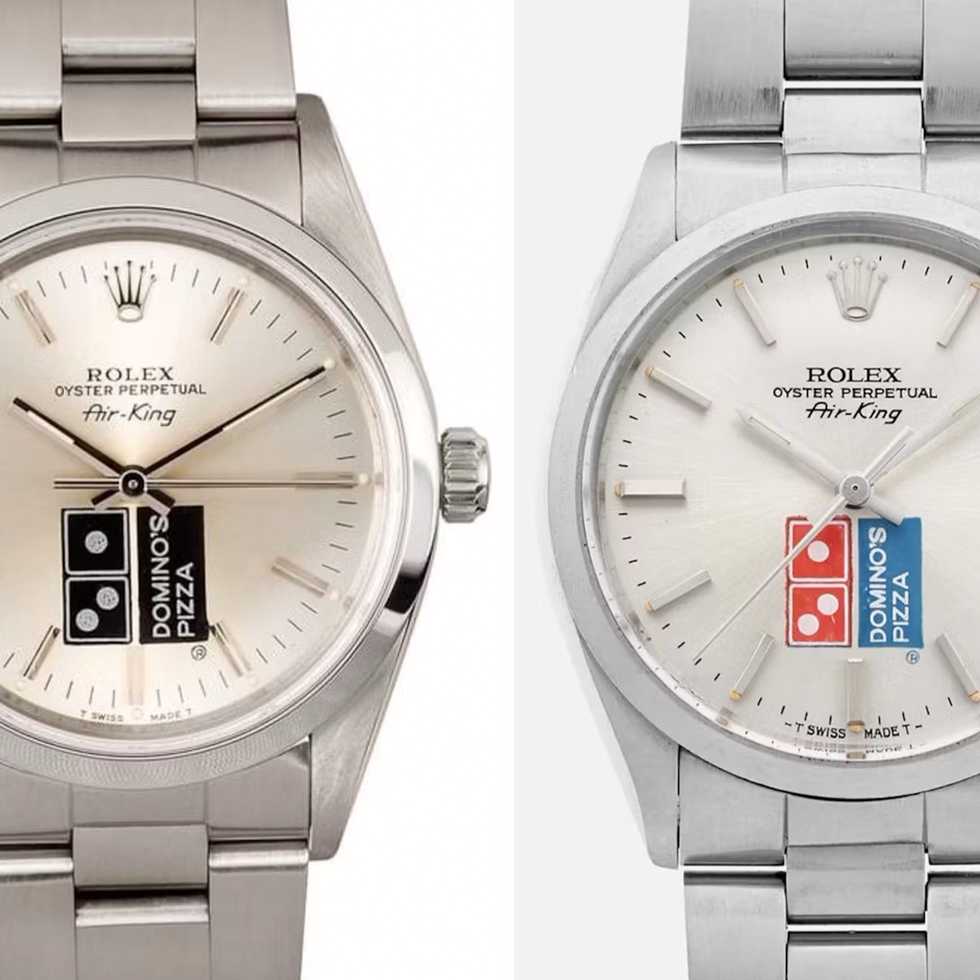
There is an irony – or perhaps that’s the very reason – that Rolex has got the hump with other people doing outré things to its watches, at precisely the same time it has itself leaned into more madcap designs, weird colours and unusual materials that initially seems very un-them – arguably turbo-charging the whole current trend for “fun” watches.
Tony Traina points out that in 2023 Rolex’s sibling brand Tudor did its own co-signed dial, a limited edition Black Bay 58 collab with the fashion brand Rowing Blazers – a watch he owns. [The label’s founder, Jack Carlson, had previously used Domino’s Pizza Air-Kings in his campaigns.]
“So, it seems like some of this corporate stuff has been passed down,” he says.
“People often discuss Tudor filtering ideas before they get passed on to Rolex, but I don’t think they would do something like this [these days]. I mean, jeez, the Le Mans Daytona they did recently had very, very subtle nods on it [the extremely expensive, limited and short-lived 2024 watch paid tribute to the centenary of the road race with a series of IYKYK details, including a red “100” on the bezel, and a rare 24-hour chronograph function, nodding to the duration of the event]. Rolex is so just so singular and controlling.”
Still, given the right collab for The Crown, you’ve got to think today’s collectors would lose their minds.
“What isn’t immediately obvious from the outside – but all collectors know – is that watches are ultimately all about human stories,” says Subdial’s Christy Davis.
“Through this lens, it’s no surprise that co-signed dials have found an audience, particularly in the current moment when there’s a shift towards unique designs and finding a watch that says something individual about the wearer and their style.”
A quick scan of the pre-owned marketplace suggests today would be a good time to pick up a Domino’s Air-King. Prices have cooled to “just” £10k-£15k, down from the giddy heights of 2021.
“Interest shot up over the pandemic, with record hammer prices achieved at auction,” says Davis.
“As is often the case with fast-moving trends, it can take a little while for supply to catch up with demand, but when it does – and everyone with a Domino’s Pizza Air-King sat in their wardrobe realises prices are soaring and decides to sell – the bubble is short-lived.”
“Some watches are genuinely rare, others just seem so because not many come to market. Ultimately the market finds a way to recognise the increased demand but balance it against supply.”
David Silver says he gets more enquiries for Disney dials than Domino’s ones.
“The one that people always ask for is ‘the Mickey Mouse’, which doesn’t [officially] exist,” he says. “That’s been going on for years.”
He suggests that his customers can still get their hit of pop fun via the official channels.
“Colourful Stella dials are becoming ever more popular, because of the vibrancy of the colour and the rarity,” he says.
“They’re the hottest take of the moment. It helps that there was a lot more stone created this year, with the Rolex launches in Geneva, with the rarest being the soft blue – the ‘Tiffany’ blue. That is the colour of the season.”
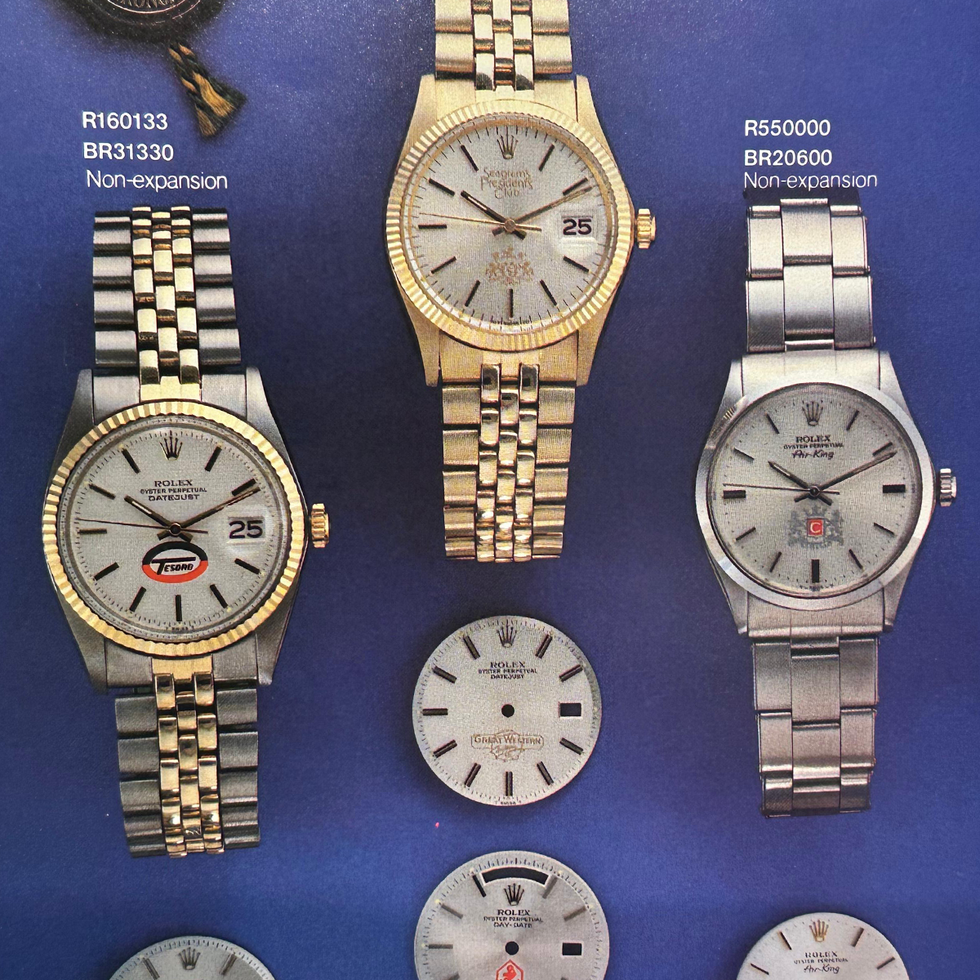
Other experts have got more of a soft spot for Rolex’s offbeat co-brand years.
“There are so many of these corporate dials, and the thrill is in the discovery,” says Davis.
“For me I’ll always go back to Yogi Berra’s Gold Oyster Perpetual from 1956. It’s widely recognised as the first custom corporate dial that Rolex ever produced, and you couldn’t ask for a more iconic logo than the New York Yankees. The hand painting adds to the human feel, it’s an all-round awesome watch and amazing story.”
“I’ve owned a Datejust with the Anheuser-Busch logo on it [American brewing company and owners of Budweiser, Stella Artois and Beck’s],” says Eric Ku.
“That’s another really colourful logo, with the eagle on it. During 9/11 I had a Halliburton one [US oil and gas multinational] that I’m sure was given to some overlord for killing people. Not quite so cool. But I love this stuff. Esoterica like this is what I got into when I was first collecting watches.”
And the story of the Domino’s Rolex isn’t quite over.
“To this day, Domino’s still gives Rolexes to its staff as rewards,” says Ku, these watches typically being Oyster Perpetual 36s.
“But Rolex won’t let them touch the dial anymore. It’s been downgraded to a case-back engraving, or something not-interesting.”
Still, Domino’s employees are possibly okay with that.
Dial logo or not, a Rolex for selling pizza still makes for a pretty decent tip.
This story originally appeared on Esquire UK.
Related:
Inside the world’s greatest rare Rolex shop: from big money collectors to celebrity super fans
Jannik Sinner and Carlos Alcaraz wore matching Rolexes after their Wimbledon final






